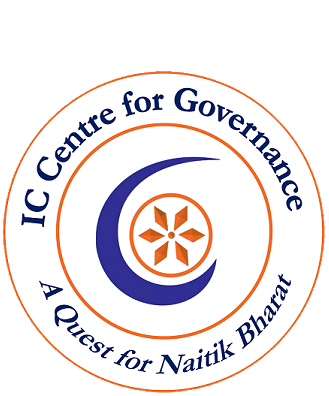The budget proposes a total expenditure of Rs. 39.45 lakh crore (15.29% of the GDP projected for 2022-23) against the 2021-22 revised estimate of Rs. 37.70 lakh crore (16.24% of the estimated GDP for 2021-22). Which means that although the total expenditure budgeted for 2022-23, shows, in nominal terms, an increase of 4.64 per cent over 2021-22, in real terms as also in terms of percent of GDP, it means a decline.
Interest payments have been budgeted as much as Rs. 9.41 lakh crore, up from Rs. 8.14 lakh crore as per the revised estimates for 2021-22. Which means that as much as 48.62% of the Government of India’s tax revenue is eaten away by interest payments alone!
But it’s a good budget, for at least four reasons. First, some commentators were saying that, given the forthcoming elections, this budget would be an election budget. That has not happened. This is a very good thing.
Second, it has reduced the allocation for fertilizer, food and petroleum subsidies from Rs. 4.33 lakh crore in the revised estimates for 2021-22 to Rs. 3.18 lakh crore. Subsidies distort decision-making, are misused, and it’s therefore much better to provide the intended help through income support.
Third, it does not concede to the demands for relief in personal income tax. India’s tax-GDP ratio is too low. It needs to go up. There is a very strong case for taxing agricultural incomes.
And four, it proposes a huge increase in the allocation to National Highway Authority of India (NHAI):to Rs. 1,34,015 crore from Rs. 65,060 crore in the revised estimates for 2021-22. This will have the effect of stimulating the economy as it will substantially increase the demand for inputs required for the construction of highways, provide additional jobs to a large number of people, increase consumption expenditure in the economy, and so on, and thus will have huge multiplier effects. Frontloading the implementation of the construction work that the NHAI plans to do, will help the economy much more.
But what puzzles me is the reduction in the allocation for the Mahatma Gandhi National Rural Employment Guarantee Programme (MGNREGP) from Rs. 98,000 crore in the revised estimates for 2021-22 to Rs. 73,000 crore in the budget estimates for 2022-23. Is it that the Finance Minister believes that, given the huge additional employment that the NHAI will generate, the allocation for MGNREGP can be reduced? If so, I must say she does not fully appreciate India’s current unemployment problem.
India currently faces an unemployment crisis and urgently needs to stop it from spiralling into a social crisis. MGNREGP can be of great help in this.
It reminds me of the eminently sensible idea of Livelihoods Nurturing Centres that the Committee, set up by the Government of India under the chairmanship of Mr. Prabhat Kumar, former Cabinet Secretary, had recommended. The idea is that these Centres would provide entrepreneurship training to the local rural youth with handholding support in setting up and operating their own micro and small enterprises. These Centres would also provide an opportunity to rural youth to acquire skills in business operations such as product development, identification of appropriate technology, product quality, preparing project report, accounting, marketing and commercial aspects of business.
These Nurturing Centres can be established within the premises of District Industries Centres or Panchayat buildings under Public-Private Partnership mode, wherein low cost projects with appropriate technologies should be demonstrated in working condition and practical hands-on training is imparted to produce different products on actual machines and equipments. The land and building or other built- up premises for these Centres should preferably be made available by DIC or the Panchayats.
In my view, it's a great idea but the Government has so far not implemented it. I don't know why? It can be implemented now. The Government may launch these Centres in a few districts and if it is satisfied with the outcomes, it can scale up.
Another major weakness of the budget is the huge shortfall in the receipts on account of privatization –only Rs. 78,000 crore against the target of Rs. 1,75,000 crore. And this is not the first time that the Government of India’s performance on the front of privatization has been so poor. Why is this so? There is reason to believe that the officials responsible for implementing a given privatization do not want to take the risks involved and therefore play a safe game by delaying it.
This is a serious issue and the Government of India must address it as soon as possible. It’s not just a large number of its enterprises that the Government needs to privatize; it also needs to monetize some of its other assets, including the excess stocks of food grains.
- Anand P Gupta, Former Professor of Economics, Indian Institute of Management, Ahmedabad
